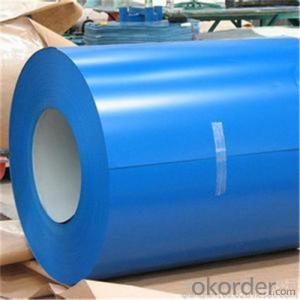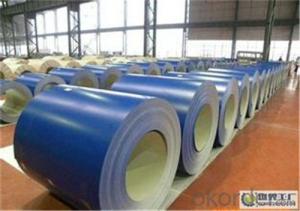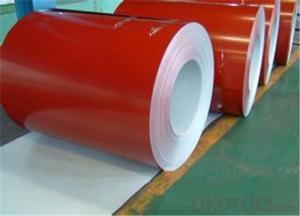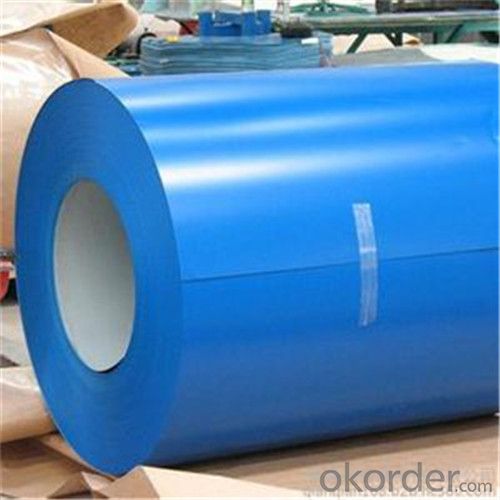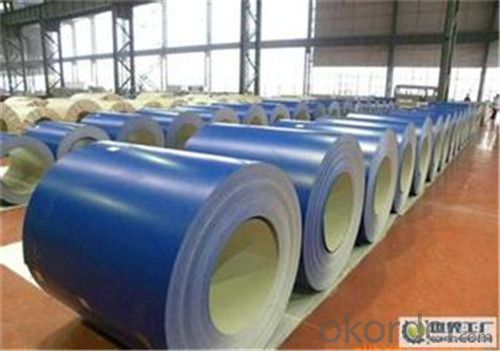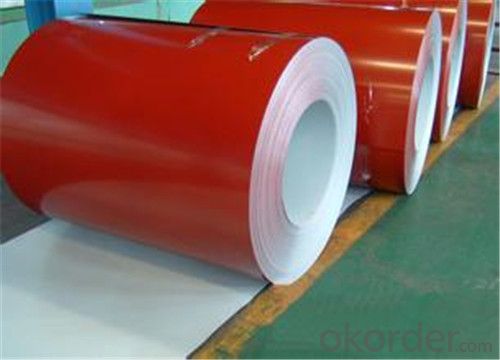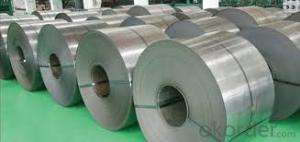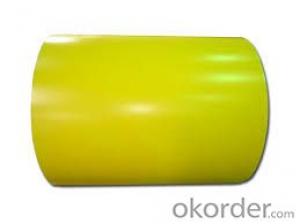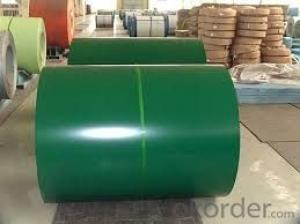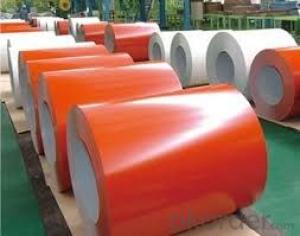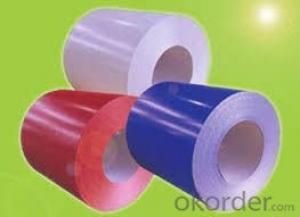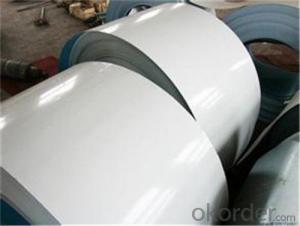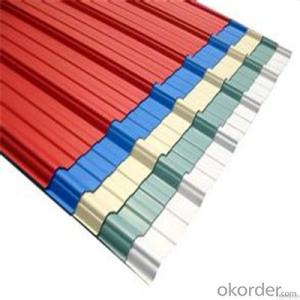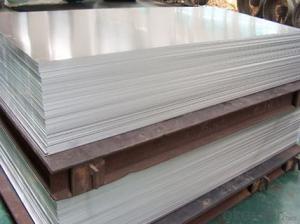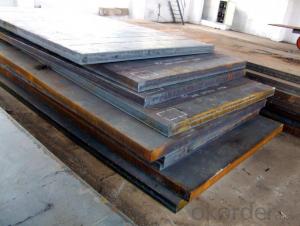prepainted Galvanized Corrugated plate / sheet in China
- Loading Port:
- Tianjin
- Payment Terms:
- TT OR LC
- Min Order Qty:
- 100 m.t.
- Supply Capability:
- 500000 m.t./month
OKorder Service Pledge
OKorder Financial Service
You Might Also Like
Description of cold rolled steel coil :
The raw material of cold rolled steel coil/sheet is high quality hot rolled product, and after pickling, kinds of new technology and new process of global cold rolling production have been applied. Therefore the manufacturing, home appliance, automobile etc.
Characteristic cold rolled steel coil :
1. Refrigerators, cabinets, power distribution baords and drums.
2. Automobile floor and roof panels.
3. Automobile fenders and quarter panels
4. Automobile fenders and quarter panels
Specification of cold rolled steel coil :
prepainted corrugated steel plate | |
material | galvanized steel sheet |
prepainted galvanized sheet | |
model No. | types of roof sheets |
sheet thickness | normal use 0.3-0.6mm |
length | any length, according to the transportation, generally less than 12m |
color | standard color:red, blue, white, grey |
special color: according to RAL color | |
characteristic | 1:weather proof |
2:heating insulation | |
3:fireproof | |
4:anti-rust | |
5:sound insulation | |
6:long life span: more than 15 years | |
advantages | 1.low foundation cost |
2.easy construction | |
3.time saving | |
4.labor saving | |
application field | 1:construction:prefabricated house, steel house, mobile house, modular house, villa, bungalow design, portable house/carbin, ready made house, kiosk booths, steel building... |
2:container manufacturing | |
3:household appliances and furniture | |
4:vehicle and vessel manufacturing | |
5:others,like machinery structual parts, manufacturing shells of motors and so on | |
packing | plastic film, pallet or as your request |
Images of cold rolled steel cold rolled steel coil:
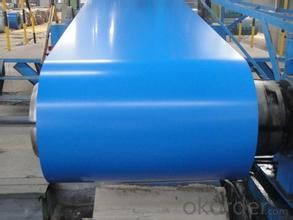
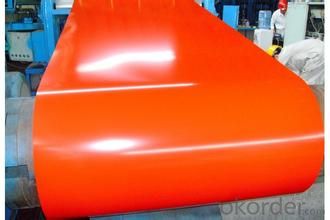
FAQ
1.What's your MOQ?
50MT, it is for one container.
2.Whether your company have QC teams?
Yeah, sure, our QC team is very important, they will keep the quality control for our products.
3. What's your normal delivery time?
Our delivery time about 10-20days for standard sizes, if you have other requirements like hardness and width ,it is about 20-40days. But don't worry ,we also try our best for the
- Q: Can steel sheets be used for making shipping containers?
- Yes, steel sheets can be used for making shipping containers. Steel is a commonly used material in the construction of shipping containers due to its strength, durability, and ability to withstand harsh weather conditions.
- Q: What is the average wind load capacity of steel sheets?
- The average wind load capacity of steel sheets can vary depending on various factors such as the thickness of the sheet, the type of steel used, and the specific design and installation of the structure. However, steel sheets are known for their high strength and durability, making them capable of withstanding significant wind loads. Typically, steel sheets used for roofing or cladding applications are designed to meet specific wind load requirements based on regional building codes and standards. These standards take into account factors such as the geographical location, building height, exposure category, and wind speed. To determine the wind load capacity of steel sheets, engineers and architects use calculations and simulations to analyze the forces exerted by the wind on the structure. They consider factors such as wind pressure, building orientation, surface area, and the shape and profile of the steel sheets. In summary, the average wind load capacity of steel sheets cannot be generalized as it varies based on several factors. It is crucial to consult with a structural engineer or building professional to determine the appropriate wind load capacity requirements for a specific steel sheet application.
- Q: Are steel sheets suitable for decorative applications?
- Indeed, decorative applications can benefit from the suitability of steel sheets. The versatility, durability, and aesthetic appeal of steel sheets allow for their use in a wide range of decorative purposes. They can be easily shaped, sized, and patterned to fit different needs. Steel sheets offer various possibilities for creating decorative elements such as wall panels, room dividers, ceiling tiles, and facades. They can also be utilized for decorative accents like trims, moldings, and decorative screens. The sleek and reflective surface of steel sheets adds a touch of modernity and elegance to any space. Furthermore, steel sheets can be enhanced with different finishes and coatings to further enhance their decorative properties. These options include paints, powder coatings, patinas, and even specialized coatings like faux rust or metallic finishes. With these choices, steel sheets can complement any interior or exterior decor style, opening up a wide range of design possibilities. Additionally, steel sheets are highly durable and long-lasting, making them suitable for both indoor and outdoor decorative applications. They are resistant to corrosion, fire, and extreme weather conditions, ensuring that the decorative elements made from steel sheets maintain their appearance and functionality over time. To sum up, steel sheets are an excellent choice for decorative applications. Their versatility, durability, and aesthetic appeal make them a perfect option for creating visually appealing and long-lasting decorative elements in various settings.
- Q: Can the steel sheets be bent without cracking?
- Yes, steel sheets can be bent without cracking. The ability of steel sheets to be bent without cracking depends on a few factors such as the type and grade of steel, the thickness of the sheet, and the bending process used. Generally, steel sheets can be successfully bent without cracking as long as the bending radius and angle are within the recommended limits for that specific type and grade of steel. Additionally, preheating the steel sheet before bending can also help reduce the risk of cracking. It is important to follow proper bending techniques and use appropriate tools to ensure successful and crack-free bending of steel sheets.
- Q: Can steel sheets be used for balcony railings?
- Yes, steel sheets can be used for balcony railings. Steel is a durable and strong material that can provide the necessary support and safety for balcony railings. However, it is important to ensure that the steel sheets are properly designed, installed, and maintained to meet the required safety standards for balcony railings.
- Q: How do steel sheets perform in terms of dimensional stability?
- Steel sheets are renowned for their remarkable dimensional stability, which renders them highly resistant to alterations in size or shape caused by external forces or temperature fluctuations. The inherent strength and rigidity of steel enable it to retain its form and dimensions over prolonged periods. Moreover, steel sheets exhibit low thermal expansion coefficients, resulting in minimal expansion and contraction with temperature variations. This characteristic further amplifies their dimensional stability, rendering them ideal for applications that demand precise dimensions and consistent performance. Given their dependable dimensional stability, steel sheets find extensive utilization across diverse industries, such as construction, automotive, and manufacturing.
- Q: What is the function of an automobile leaf spring?
- Spring: the multi length and unequal curvature of the folded plate. After installation ends naturally curved upward. When the impact force of the wheel face came when the steel plate deformation, play a buffer, damping effect
- Q: What is the maximum thickness of a steel sheet?
- The maximum thickness of a steel sheet may differ based on different factors, including the type of steel, the manufacturing process, and the intended use. In most cases, steel sheets can be produced with a thickness of approximately 25 millimeters (1 inch), or even thicker in certain instances. Thicker steel sheets are commonly employed in demanding applications, such as construction, shipbuilding, and industrial machinery, where strength and durability are vital. To determine the precise maximum thickness for a specific type of steel sheet, it is crucial to consult manufacturers or adhere to industry standards.
- Q: What is the process of manufacturing steel sheets?
- The process of manufacturing steel sheets involves several steps. First, the raw materials for steel production, which include iron ore, coal, and limestone, are obtained. These materials are then processed in a blast furnace to create molten iron. The molten iron is then refined in a basic oxygen furnace or an electric arc furnace, where impurities are removed and alloying elements are added to achieve the desired steel composition. Once the steel is refined, it is cast into slabs or billets, which are then reheated in a furnace to a temperature suitable for rolling. The reheated steel is then passed through a series of rolling mills, where it is shaped and reduced in thickness to form a continuous sheet. The rolling process involves multiple passes through the mills, with each pass gradually reducing the thickness of the steel and improving its properties. After the rolling process, the steel sheets are often pickled and treated with various coatings or finishes to improve their surface quality and corrosion resistance. Finally, the sheets are cut into specific sizes and may undergo additional processing, such as tempering or annealing, to further enhance their mechanical properties. Overall, the process of manufacturing steel sheets involves a combination of refining, casting, rolling, and finishing processes to produce high-quality sheets that meet the desired specifications.
- Q: What are the applications of steel sheets?
- Steel sheets have a wide range of applications across various industries. They are commonly used in construction for roofing, siding, and structural support due to their strength, durability, and resistance to corrosion. Steel sheets are also used in automotive manufacturing for body panels and chassis components. Additionally, they find utility in appliances, machinery, and equipment manufacturing, as well as in the production of household items like utensils and cookware.
Send your message to us
prepainted Galvanized Corrugated plate / sheet in China
- Loading Port:
- Tianjin
- Payment Terms:
- TT OR LC
- Min Order Qty:
- 100 m.t.
- Supply Capability:
- 500000 m.t./month
OKorder Service Pledge
OKorder Financial Service
Similar products
Hot products
Hot Searches
Related keywords
